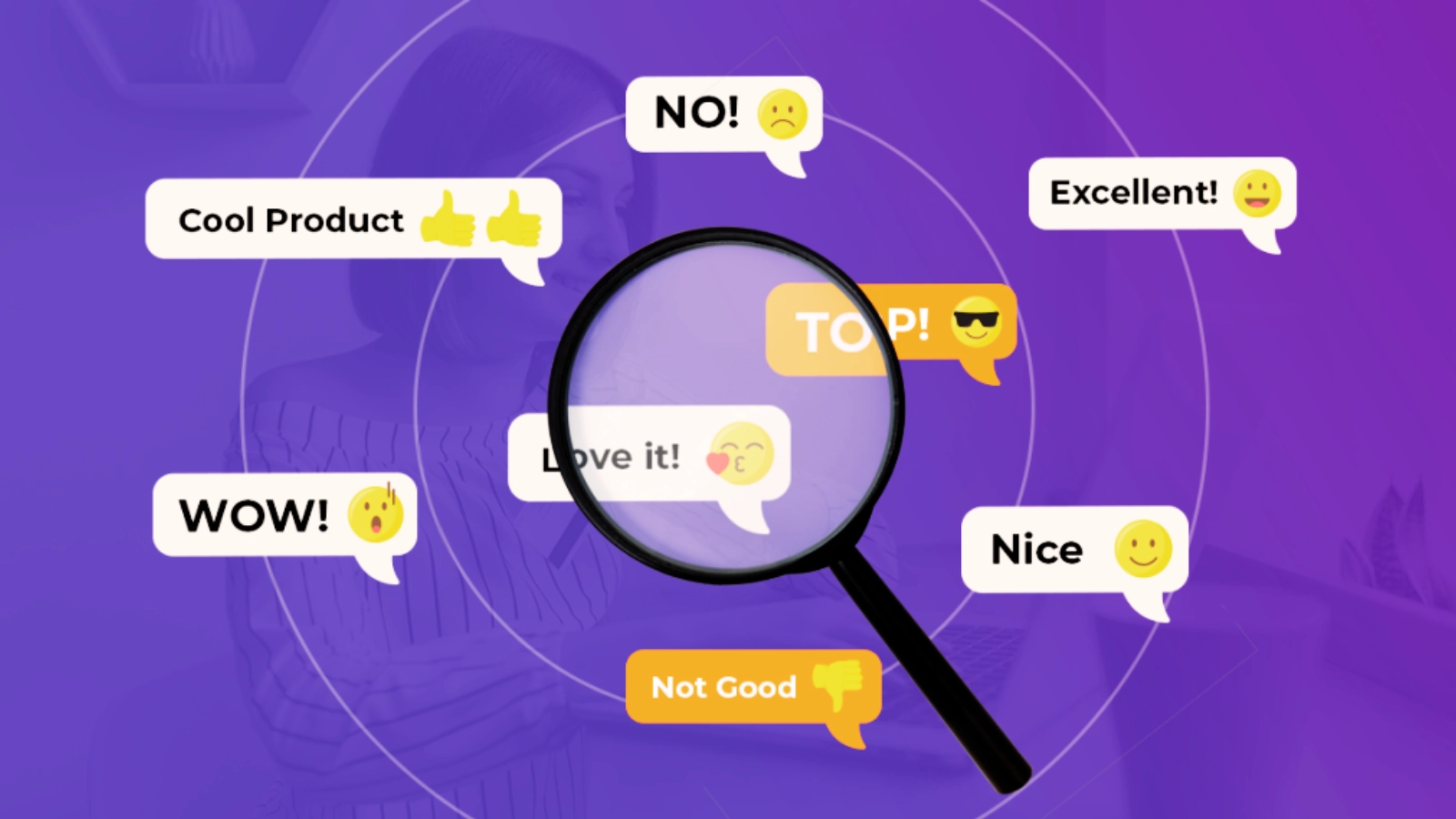In the era of social media crescendos and the ever-present online critique, your brand is constantly in the spotlight. Ever wish you could not just hear the whispers but truly understand the vibes?
Enter customer sentiment analysis – the wizardry that transforms digital noise into actionable insights.
As the digital stage gets louder, sentiment analysis takes center stage, decoding the emotions hidden within every comment and review. It’s not just about reading the lines; it’s about feeling the rhythm sentiment analysis examples of your brand’s narrative.
In this blog, we are going to guide you through everything you need to know about sentimental analysis and six ideas to improve customer engagement strategy through it.
Let’s Just Jump Right In!!
Listen To The Blog Now!!
Why Is Customer Sentiment Analysis Key For Your Customer Experience?
 Customer Sentiment Analysis is a cornerstone in enhancing your Customer Experience (CX) for several compelling reasons:
Customer Sentiment Analysis is a cornerstone in enhancing your Customer Experience (CX) for several compelling reasons:
Insight into Customer Emotions:
Understanding the emotional landscape of your customers is pivotal. Sentiment analysis allows you to decipher whether customers are happy, frustrated, satisfied, or dissatisfied with your products or services.
Proactive Issue Resolution:
We’re digging deep, shining a light on an overworked pain point, and giving you the tools to get your team back on the path to burnout. This proactive approach enables organizations to address problems swiftly, preventing negative sentiments from spreading and impacting the overall customer experience.
Strategic Decision-Making:
Sentiment analysis serves as a compass for strategic decision-making. By understanding the sentiments expressed by customers, businesses can make informed decisions that resonate positively with their audience, ultimately contributing to a more positive customer experience.
Enhanced Product and Service Offerings:
Customer sentiments offer valuable input for product and service development. Businesses can identify areas of improvement, innovation, and enhancement by listening to what customers are saying, ensuring that offerings align with customer expectations.
Building Customer Loyalty:
Positive customer sentiments contribute significantly to building loyalty. When businesses address concerns, provide exceptional support, and resonate positively with customers, it fosters a sense of loyalty and strengthens the customer-business relationship.
Real-time Feedback Loop:
Sentiment analysis provides a real-time feedback loop, allowing businesses to adapt and respond swiftly to changing customer sentiments. This agility is crucial in maintaining a dynamic and customer-centric approach to business operations.
Brand Perception Management:
Actively managing and responding to customer sentiments helps shape and maintain a positive brand perception. By responding to negative feedback quickly and focusing on positive feedback, companies can make a difference in how long they stay in the market.
5 Benefits Of Customer Sentiment Analysis
 Customer sentiment analysis provides a wealth of benefits for businesses looking to understand and respond to the feelings and opinions of their customers.
Customer sentiment analysis provides a wealth of benefits for businesses looking to understand and respond to the feelings and opinions of their customers.
Here are five key advantages:
Upselling Opportunities
Identifying positive sentiments among customers provides a unique avenue for businesses to capitalize on upselling opportunities. Satisfied customers are more likely to be receptive to additional products or services, creating a potential revenue stream.
Deliver Exceptional Support
By examining customer sentiment, companies can gain insight into the areas in which their support teams are excelling or where they are not. This knowledge empowers organizations to enhance customer support, addressing concerns promptly and effectively.
Identify Emotional Triggers
Customer sentiment analysis allows businesses to identify emotional triggers within feedback. This emotional intelligence is crucial for tailoring strategies that resonate positively with the audience, fostering a deeper connection with the brand.
Handle Multiple Customers at One Time
Efficiently managing social media customer service interactions requires the ability to handle multiple concerns simultaneously. Sentiment analysis aids in prioritizing and addressing issues based on their emotional impact, ensuring a streamlined customer service experience.
Engage Positively With Customers
Positive engagement is the cornerstone of customer loyalty. Analyzing sentiments helps businesses identify areas where positive engagement can be enhanced, leading to stronger customer relationships and increased brand advocacy.
How to Measure Customer Sentiments?
 To elevate customer sentiment analysis, reliable measurement methods are crucial. Here are some effective ways to gauge customer sentiments:
To elevate customer sentiment analysis, reliable measurement methods are crucial. Here are some effective ways to gauge customer sentiments:
Support Experience Software
Investing in advanced support experience software is paramount for businesses seeking to enhance their customer experience analysis. These tools make it easy to track how customers interact with you and use advanced sentiment analysis to get real-time info.
Integration with these platforms further amplifies this process, offering robust social media automation capabilities. By Social media automation tools like Socinator ensure businesses can efficiently respond to customer sentiments across various platforms, contributing to a more informed and responsive customer experience.
Social Monitoring
Social media platforms serve as a goldmine of customer sentiments. Utilizing social monitoring tools allows businesses to track mentions, comments, and reviews related to their brand.
By actively monitoring social media analytics with the support of tools like Socinator, businesses can obtain real-time insights into customer opinions. This not only aids in understanding how customers perceive the brand but also enables businesses to promptly address concerns, engage with their audience, and shape a positive online reputation management strategies.
Socinator: Elevating Customer Sentiment Analysis
Socinator is an automation tool for social media that not only automates your SNS but also analyzes it to give you a complete view of how it’s working so you can focus on customer engagement.
Here are some general features and functionalities commonly associated with Socinator:
Social Media Management:
Socinator supports various social media platforms, including but not limited to Facebook, Instagram, Twitter, LinkedIn, Pinterest, YouTube, and more. It allows users to manage multiple accounts on these platforms from a single dashboard.
Automation:
One of the key features of Socinator is automation. Users can schedule posts, automate interactions (likes, comments, follows, etc.), and perform other activities to save time and effort.
Content Scheduling:
Users can plan and schedule their social media content in advance. This feature is particularly useful for maintaining a consistent posting schedule.
Account Growth:
The Socinator may offer tools for growing social media followers and engagement. This can include automated follow/unfollow actions, liking posts, and engaging with users in a targeted manner.
Analytics:
The platform may provide analytics and reporting tools, allowing users to track the performance of their social media accounts. This can include insights into follower growth, engagement, and post reach.
Proxy Support:
Socinator may support the use of proxies to enhance privacy and security when managing multiple accounts.
Customization:
Users may have the ability to customize their automation strategies based on specific criteria such as hashtags, keywords, or user demographics.
In essence, Socinator serves as a versatile and powerful solution for businesses and individuals seeking to navigate the complexities of social media management.
Whether it’s automating routine tasks, scheduling posts, engaging with the audience, or analyzing customer sentiments, Socinator offers a holistic platform to meet diverse social media management needs.
In-app & Website Ratings
Incorporating in-app and website ratings into the sentiment analysis strategy is a direct way to collect customer feedback. Actively encouraging customers to leave ratings provides businesses with a valuable dataset for sentiment analysis.
The aggregated ratings offer a quantitative measure of customer satisfaction and dissatisfaction. Analyzing this data alongside qualitative feedback allows businesses to identify specific areas that contribute to positive or negative sentiments, guiding strategic improvements in the overall customer experience.
Voice Of The Customer (VoC)
Implementing Voice of the Customer programs is a proactive approach to understanding and collecting direct feedback. By doing surveys, talking to customers, and using feedback forms, companies can get a real feel for how customers feel.
This qualitative data provides a deeper understanding of the emotional nuances expressed by customers, helping businesses tailor their strategies to align with customer expectations.
The VoC approach serves as a direct channel for customers to express their thoughts and feelings, contributing to a more transparent and customer-centric business model.
Read More:
Reputation Management Strategy: 8 Steps To Follow
How to Develop An Effective Customer Engagement Strategy For Social Media
The Truth About Social Media Monitoring: How To Monitor Your Competition and More
Proactive Vs Reactive Marketing: Know The Difference
6 Ideas To Improve Customer Sentiment Analysis
Enhancing customer sentiment analysis involves proactive marketing strategies and the implementation of effective ideas. Here are six actionable strategies to consider:
Sentiment Categorization
Implement advanced sentiment categorization techniques to classify feedback into granular categories. This detailed approach provides deeper insights into specific aspects of customer sentiments, allowing for more targeted improvements.
Potential Problem Identification
Utilize sentiment analysis proactively to identify potential issues before they escalate. This proactive approach allows businesses to address concerns promptly, preventing negative sentiments from spreading.
Competitor Analysis
Extend sentiment analysis to include competitor monitoring. Understanding how customers perceive when competitors provide a comparative benchmark and identify opportunities for differentiation.
A Deeper Understanding Of Customer Feedback
Go beyond surface-level analysis. Dive deeper into customer feedback to understand the underlying emotions and motivations. This nuanced understanding enables businesses to make targeted improvements that resonate with customers.
Enhanced Call Routing
Implement sentiment analysis in call centers to route calls based on emotional cues. This ensures that customers with urgent or sensitive issues are directed to appropriate support channels, improving overall customer satisfaction.
Legislative Compliance
Stay abreast of regulatory sentiments and ensure that business practices align with prevailing ethical, environmental, and social sentiments. This proactive approach contributes to a positive brand image.
Conclusion
A key factor in improving business results is improving customer sentiment analysis. By tailoring Socinator to these concepts, you can improve your understanding of customer sentiment.
This, in turn, enables you to make informed decisions, enhance customer satisfaction, and build lasting relationships. As technology advances, the capacity to accurately interpret and react to customer sentiment is becoming increasingly important to remain competitive in the marketplace.
So, invest time, know about social media monitoring and resources in refining your analysis, and watch as your business thrives in the era of customer-centricity.






